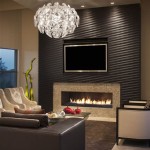Gold vs. Silver Home Decor: A Comparative Analysis
The selection of metallic accents plays a crucial role in defining the aesthetic of a living space. Gold and silver, two of the most popular choices, each possess distinct qualities that can significantly impact the overall atmosphere and perceived value of a room. Understanding the nuances of these metals, their historical contexts, and their application within various design styles is essential for making informed decisions regarding their integration into home decor.
This article provides a comprehensive comparison of gold and silver as decorative elements, exploring their characteristics, design applications, and considerations for balancing their impact within a home environment. It examines the historical significance of each metal, their aesthetic properties, and the practical considerations that influence their use in interior design.
Historical and Cultural Significance
Throughout history, both gold and silver have held significant cultural and economic value, shaping their perception and application in art, design, and ornamentation. Gold, often associated with wealth, power, and divinity, has been revered across civilizations. Its rarity and resistance to tarnishing have made it a symbol of enduring value and prestige, frequently used in royal settings and religious artifacts.
Conversely, silver, while also valued, has historically been more accessible than gold, leading to its widespread use in functional objects and decorative arts within aristocratic and upper-middle-class households. Silver's reflective qualities and malleability have made it a popular choice for silverware, jewelry, and intricate decorative details. Both metals are deeply embedded in cultural traditions, influencing their aesthetic appeal and perceived value in contemporary design.
The historical context of each metal extends beyond mere economic value. Gold's association with the sun and enlightenment contributes to its perceived warmth and vibrancy. Silver, linked to the moon and its reflective properties, evokes a sense of coolness, sophistication, and illumination. These symbolic associations continue to influence design preferences and the psychological impact of each metal within interior spaces.
Aesthetic Properties and Design Applications
The aesthetic properties of gold and silver differ significantly, influencing their suitability for various design styles and applications. Gold is characterized by its warm, yellowish hue, which evokes feelings of luxury, opulence, and comfort. It reflects light in a manner that adds depth and dimension to a space, making it particularly effective in creating a sense of richness and grandeur. Gold finishes range from bright, highly polished surfaces to more subdued, matte options, allowing for versatility in design schemes.
Silver, in contrast, possesses a cool, reflective surface that exudes elegance and sophistication. Its neutral tone allows it to blend seamlessly with a wide range of color palettes and design styles. Silver's ability to brighten a space and create a sense of openness makes it a popular choice for smaller rooms or areas with limited natural light. Like gold, silver finishes vary, from highly polished to antiqued or brushed, each offering a distinct aesthetic appeal.
In terms of design applications, gold is often used as an accent in furniture, lighting fixtures, and decorative accessories. It can be incorporated into frames, mirrors, and upholstery details to add a touch of glamour and sophistication. Gold hardware, such as drawer pulls and doorknobs, can also elevate the overall aesthetic of a room. While often associated with traditional styles, gold can also be effectively integrated into modern and contemporary designs to create a sense of contrast and visual interest.
Silver, similarly, finds application in various elements of interior design. Silverware, serving trays, and decorative bowls are classic choices for adding a touch of elegance to dining rooms and living spaces. Silver-framed artwork and mirrors can enhance the visual appeal of walls, while silver lighting fixtures can provide both functional and decorative illumination. Silver is particularly well-suited for minimalist and Scandinavian-inspired designs, where its cool tones and clean lines complement the overall aesthetic.
The choice between gold and silver often depends on the desired mood and atmosphere of the space. Gold tends to create a warmer, more inviting ambiance, while silver evokes a cooler, more sophisticated feel. The interplay between the two metals can also be utilized to create a dynamic and visually stimulating environment, but careful consideration must be given to the overall balance and harmony of the design.
Practical Considerations in Home Decor
Beyond their aesthetic appeal, several practical considerations influence the selection and application of gold and silver in home decor. Cost is a significant factor, as both metals can be relatively expensive, particularly in their pure forms. However, various alternatives, such as gold-plated or silver-plated items, offer a more affordable option without sacrificing the desired aesthetic. These alternatives often utilize base metals with a thin layer of gold or silver applied to the surface, providing a similar look and feel at a lower cost.
Maintenance is another important consideration. While gold is naturally resistant to tarnishing, silver is prone to oxidation, which can cause it to darken over time. Regular cleaning and polishing are necessary to maintain silver's shine and prevent it from losing its luster. Gold, on the other hand, requires less frequent maintenance and typically only needs to be cleaned with a soft cloth to remove dust and fingerprints.
The durability and practicality of gold and silver also vary depending on their application. Gold is generally more resistant to scratches and wear, making it a suitable choice for high-traffic areas or items that are frequently handled. Silver, being softer, is more susceptible to scratches and dents, requiring more careful handling and placement. The choice between the metals should therefore consider the intended use and level of wear and tear anticipated.
Furthermore, the compatibility of gold and silver with other materials within the space is crucial. Gold tends to complement warm colors and natural materials such as wood and leather, creating a cohesive and inviting atmosphere. Silver, on the other hand, pairs well with cool colors and modern materials such as glass and metal, enhancing the overall sense of sophistication and elegance. Understanding these compatibility factors is essential for creating a balanced and harmonious design scheme.
Mixing gold and silver can be a challenging but rewarding task. When done correctly, the combination can create a dynamic and visually interesting space. The key is to balance the warm and cool tones and to ensure that one metal does not overpower the other. A common approach is to use one metal as the dominant element and the other as an accent, creating a subtle yet impactful contrast. For example, a room with predominantly silver accents can incorporate gold picture frames or candlesticks to add warmth and visual interest.
Lighting also plays a crucial role in how gold and silver are perceived within a space. Gold tends to reflect warm light, creating a cozy and inviting atmosphere, while silver reflects cool light, enhancing the sense of brightness and openness. The type of lighting used in a room can therefore influence the effectiveness of each metal and its impact on the overall aesthetic. Experimenting with different lighting options can help to determine the optimal balance and create the desired mood.
Ultimately, the choice between gold and silver for home decor is a matter of personal preference and design intent. Both metals offer unique aesthetic qualities and practical considerations that must be carefully evaluated. By understanding the historical significance, aesthetic properties, and practical considerations of each metal, individuals can make informed decisions that enhance the beauty and functionality of their living spaces.
The use of gold and silver, either individually or in combination, can significantly elevate the overall aesthetic of a home, creating a sense of luxury, sophistication, and timeless elegance. The careful consideration of these metals in the design process can transform ordinary spaces into extraordinary environments that reflect personal style and create lasting impressions.

10 Chic Ways To Mix Metals In Your Home Decor Gold Living Room Silver

Mixing Silver And Gold Home Decor Living Room French Country Designs

Mixing Metals In Home Decor

5 Tips For Using Metallics At Home Making Lemonade

10 Amazing Ways To Include Metallics In Your Home Decor Interior Design Staging Jacksonville Fl Interiors Revitalized

Go For Gold Julie Loves Home

20 Stunning Interiors That Mix Metallics

Love This Modern Meets Hollywood Regency Glam Look Cool Grey Tones Are Softened And Warmed Up With Cre Home Living Room Decor Designs

Living Room Dining Home Decor With Silver And Gold Metal

Go For The Gold And Silver Broe Copper Making Lemonade







